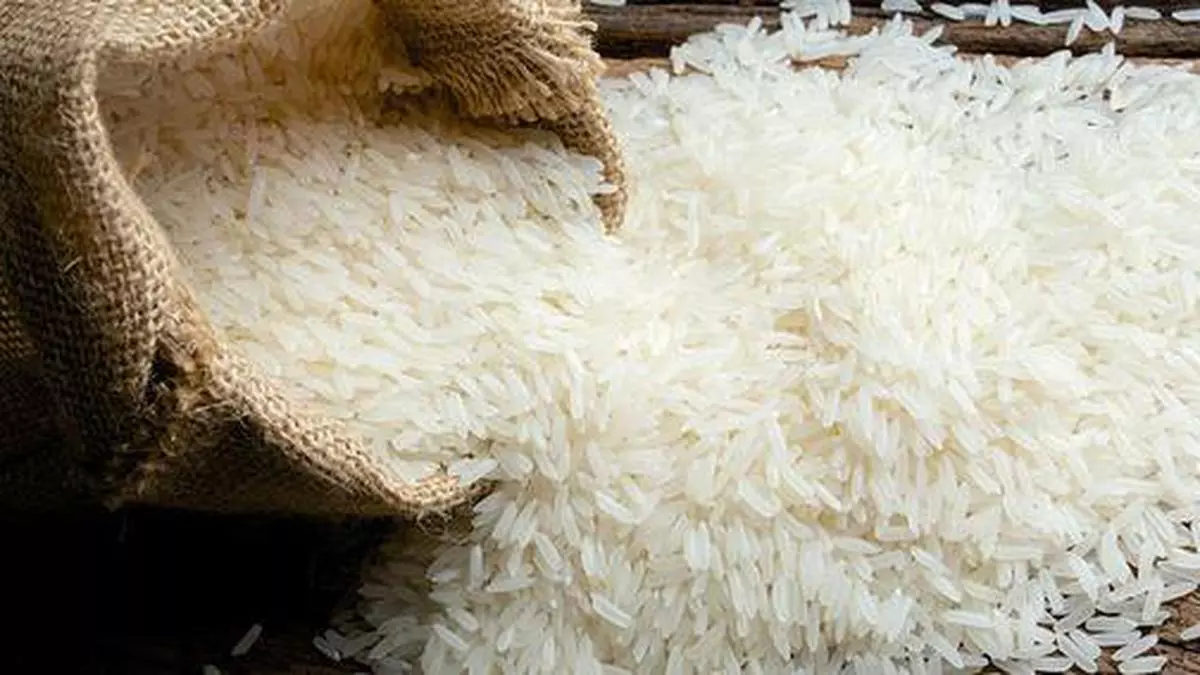India’s rice exports down 90% year-on-year on shipment curbs
India’s non-basmati rice exports have dropped by about 90 per cent year-on-year with the Government curbing shipments through ban and levy and African nations looking to buy the grain from Vietnam and Thailand.
“Rice exports are just 10 per cent in September this year compared with the same period a year ago,” said New Delhi-based exporter Rajesh Paharia Jain.
“Parboiled rice exports are down to 10 per cent of the normal shipments,” said VR Vidya Sagar, Director, Bulk Logix.
Fears over yield
The Government banned exports of white rice on July 20 and followed it up with a 20 per cent export duty on August 26. At the same time, it fixed $1,200 a tonne as the minimum export price (MEP) for Basmati rice exports. Earlier this week, Food and Commerce Minister Piyush Goyal said the MEP would be cut to $850 but no orders have been passed yet.
India has curbed rice exports to ensure ample supplies in the domestic market, particularly when its paddy cultivation has been affected by a truant monsoon. Though the area under the cereal is higher, the yield is expected to be affected due to indifferent weather.
Data from the Agricultural and Processed Food Products Export Development Authority (APEDA) for the April-July period of the current fiscal show that non-basmati exports increased to 5.81 million tonnes (mt) against 5.36 mt in the same period a year ago. Earnings were, however, lower by 2.77 per cent.
These shipments took place before the Centre imposed its measures to curb exports.
Prices down a tad
“Indian parboiled rice is about $500 a tonne free-on-board, including the export duty. But its cost and freight price at African ports is $550. African countries feel why can’t they buy Vietnam or Thailand rice which are seen as premium to Indian rice,” said Sagar.
According to the Thai Rice Exporters Association, barring 25 per cent broken white rice, all other varieties are ruling over $600 a tonne. Prices have eased a bit over the last couple of weeks in view of the weakening Thai baht, though.
Thailand is quoting its 100 per cent sortexed parboiled rice at $610, while Pakistan is offering the rice at $573-77 a tonne. “We expect the African nations to return to buying Indian parboiled rice soon,” he said.
Delhi-based exporter Jain said not many ships have set sail over the past 40-45 days, especially with parboiled rice, in view of the Customs Department insisting on payment of the export duty.
15-year high index
“Not a single vessel has been loaded at the Kakinada port in Andhra Pradesh over the last 37 days,” he said.
Research agency BMI, a unit of Fitch Solutions, said on a global basis, the most significant development in the rice sector has been India’s introduction of several new trade restrictions. These have served to further tighten export supplies. The FAO’s All Rice Price Index climbed to a nominal 15-year high.
BMI said the global rice market will face a 1.4 mt deficit in the 2023-24 season ending August compared with its earlier estimate of 1 mt.
This is in view of a slight markdown to harvest expectations in Thailand caused by below-average moisture conditions and concerns as to water supplies. This will mark the third consecutive seasonal deficit produced by the global rice market, which has not occurred between 2002-03 and 2004-05, BMI said.
According to the US Department of Agriculture, Thailand’s rice production will likely be 6 per cent lower due to the impact of El Nino, which results in drought and prolonged dryness in Asia.
El Nino to turn severe
Global models have forecast the El Nino, which set in July, to be severe at least until March 2023. India, on the other hand, could be helped by an Indian Ocean Dipole that will likely last till December. The IOD will bring more rain, particularly to the southern peninsula.
In view of the prolonged dry period in parts of Asia, the storage in Thailand’s reservoirs is only around 40 per cent, leaving Bangkok to urge farmers to skip the second paddy crop starting October. This makes up at least 20 per cent of Thailand’s total rice production.
Sagar said basmati exports will likely pick up but Customs authorities’ insistence that the grain should not be below 6.6 mm in length is slowing up the shipment process. Jain, however, said the main hurdle was Customs insisting on $80-90 per tonne payment of export duty. Both said buyers were waiting, particularly hoping that the duty burden would be reduced.
Ban review
However, any review will likely be made only after October 15, when the Centre is likely to get a sense of rice production this year as kharif arrivals will gather pace by then.
“It is unlikely that the ban on white rice will go away or other curbs will be relaxed,” said Bulk Logix’s Sagar.
Officials in the Ministry of Agriculture are hopeful that rice production will be around 112 mt despite monsoon playing truant. But traders and analysts fear that the paddy crop would have been affected in Andhra, Telangana, Odisha, Bengal, Punjab and Haryana.
